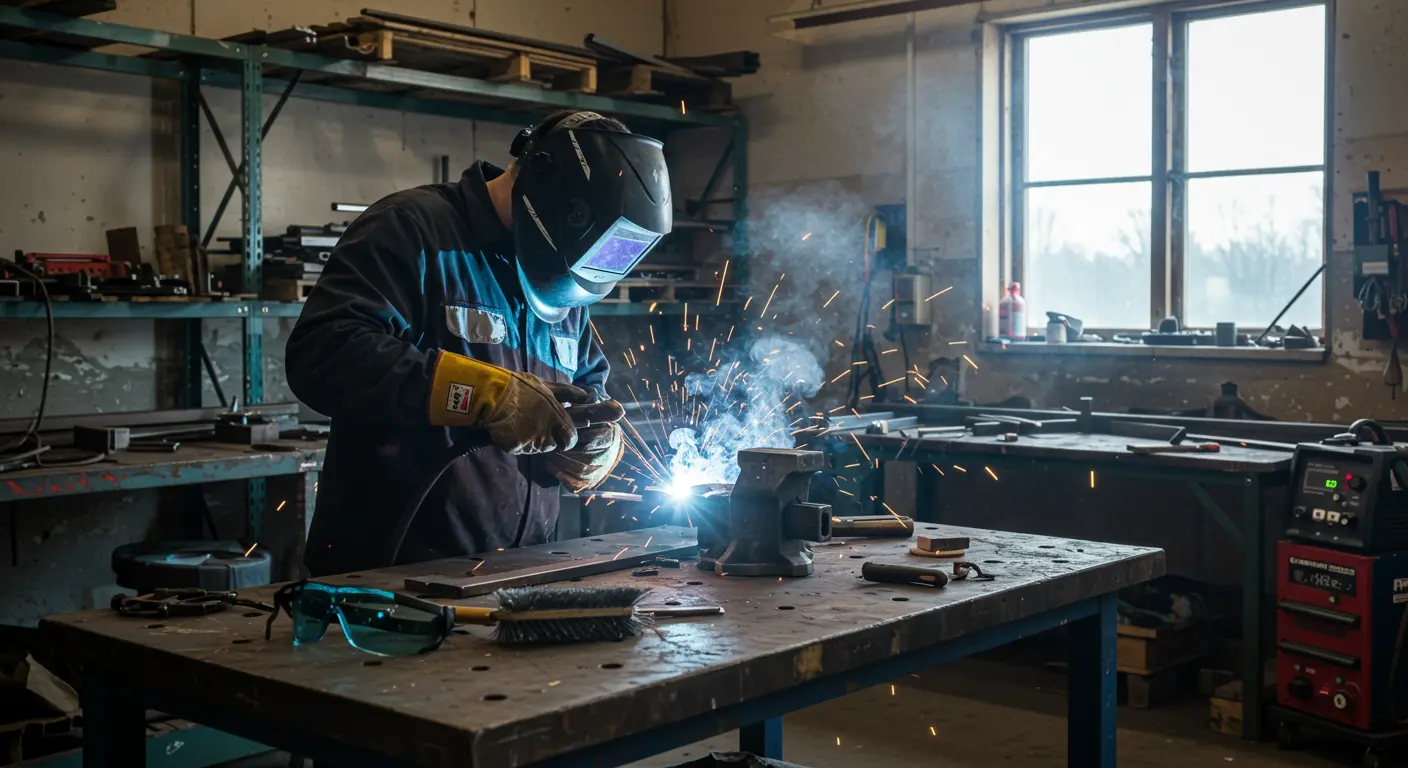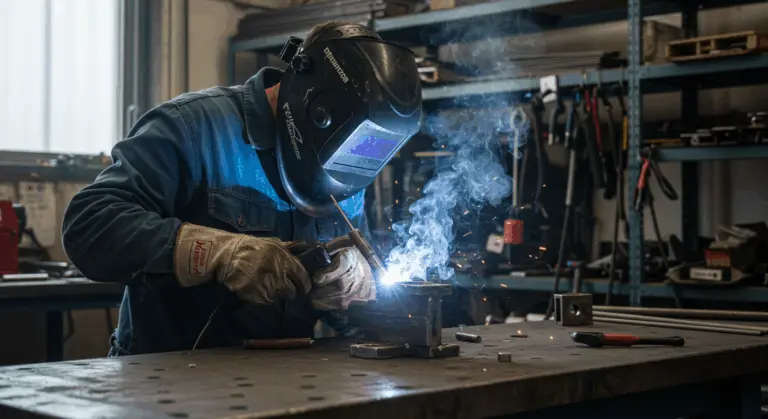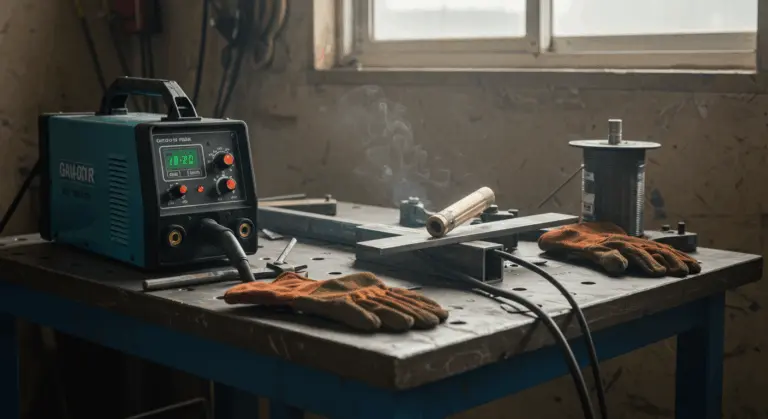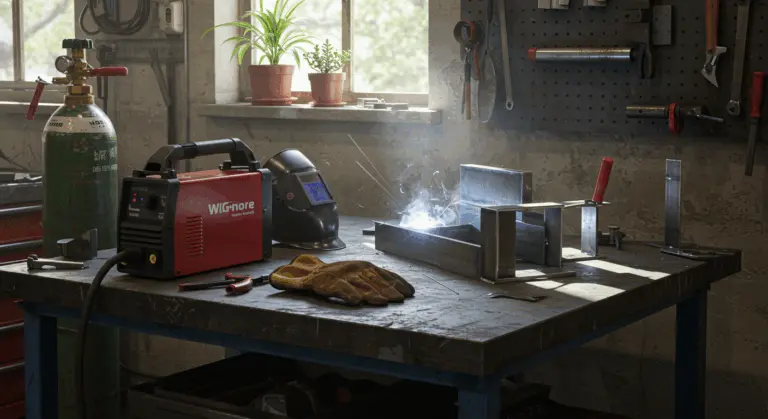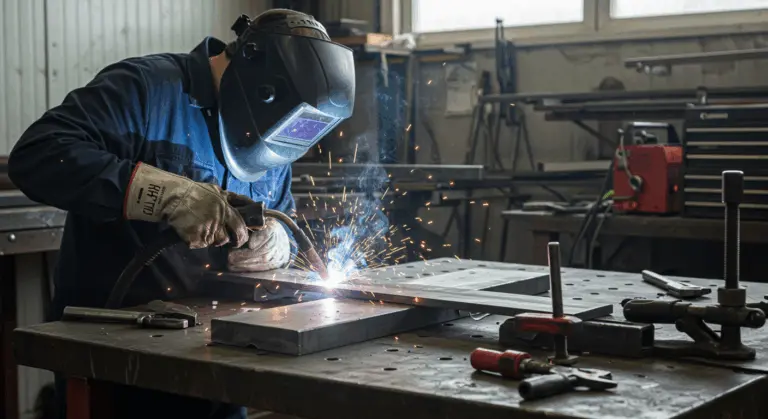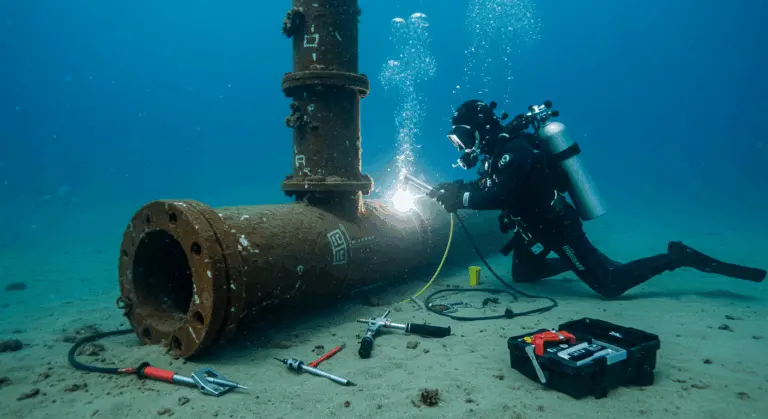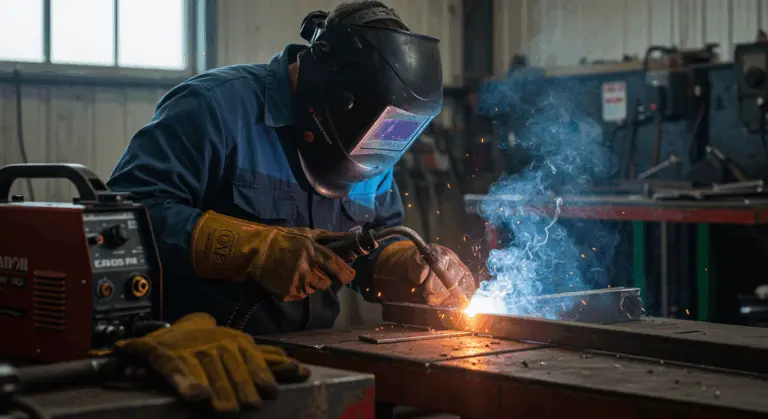What is DEEP Welding?
DEEP (Direct Current Electrode Positive), also known as reverse polarity, is a welding configuration where the electrode connects to the positive terminal while the workpiece attaches to the negative terminal.
This configuration is the standard polarity for MIG (Metal Inert Gas) and most Stick (SAW) welding processes. In DEEP, electrons flow from the workpiece to the electrode—a fundamental characteristic that defines its unique welding behavior.
DEEP provides exceptional arc stability and a distinctive cleaning action on the workpiece. However, it produces a notably wider, shallower weld compared to DEN. While many electrodes are specifically engineered for DEEP operation, others are designed for DEN (Direct Current Electrode Negative) or AC (Alternating Current) applications.
How DEEP Welding Works
DEEP welding works through electron flow direction within the welding circuit. In this configuration, electrons leap from the workpiece (negative terminal) toward the electrode (positive terminal). This electron movement generates several critical effects that significantly affect the welding process.
When welding aluminum, DEEP’s electron flow is essential—it helps fracture the tenacious surface oxide layer, which possesses a melting point far exceeding that of the base metal. This cleaning action is necessary for achieving high-quality aluminum welds.
Throughout the welding process, flux (in stick welding) or shielding gas (in MIG welding) shields the molten weld pool from atmospheric contamination. DEEP works exceptionally well even in breezy conditions, making it particularly well-suited for outdoor applications.
DEEP offers a compelling balance of benefits and limitations:
-
Advantages: Exceptional arc stability, simplified starts with specific electrodes, and powerful cleaning action on metals like aluminum.
-
Disadvantages: Reduced deposition rates and more limited weld penetration relative to DEN.
Heat Distribution in DEEP Welding
In DEEP welding, heat distribution is a key difference: approximately 70% of the arc’s heat concentrates at the electrode, while the remaining 30% flows to the workpiece.
This thermal profile directly opposes DEN, where roughly 70% of the heat generates at the workpiece. Understanding this difference is important when selecting the optimal polarity for any given application.
The concentrated heat at the electrode in DEEP creates several distinct effects:
For materials like aluminum and magnesium that demand cleaning action, DEEP works well despite its shallower penetration. The electron flow effectively disrupts surface oxides, making this trade-off worthwhile.
Applications of DEEP Welding
In Stick welding (SAW), DEEP is widely used for its exceptional arc stability on medium and thick steel sections. This makes it indispensable for structural work across construction, shipbuilding, and pipeline fabrication industries.
Historically, DEEP played a specialized role in TIG welding aluminum. Today, however, it’s considered obsolete for this process due to excessive electrode wear and significant weld contamination risks.
The cleaning action inherent to DEEP is needed for welding non-ferrous metals like aluminum and magnesium. This capability makes it indispensable across aerospace, automotive, and marine industries.
DEEP vs DEN: Key Differences
The fundamental distinction between DEEP (Direct Current Electrode Positive) and DEN (Direct Current Electrode Negative) comes from their opposing polarity configurations. DEEP connects the electrode to the positive terminal while linking the workpiece to the negative terminal. DEN reverses this arrangement entirely—electrode to negative, workpiece to positive.
Heat distribution varies dramatically between these polarities. DEN delivers deeper penetration by concentrating approximately 70% of its heat on the workpiece, creating characteristically narrow welds. DEEP, conversely, focuses roughly 70% of its heat at the electrode, producing wider, shallower weld beads.
Deposition rate—the speed at which filler metal is applied—also differs markedly. DEN typically achieves higher deposition rates because the electrode remains cooler. DEEP’s hotter electrode naturally results in reduced deposition rates.
Each polarity brings distinct strategic advantages. DEEP is necessary for aluminum welding due to its oxide-cleaning capabilities, while DEN often takes precedence for its superior penetration depth and enhanced deposition rates. AC may be employed to prevent arc blow in specific challenging situations.
Choosing the Right Polarity for Welding
Selecting optimal polarity depends on several critical factors:
Strategic polarity selection also helps prevent defects like excessive spatter—results that can be further enhanced through proper shielding gas selection, refined technique, and optimized welding parameters.
Modern welding equipment frequently incorporates polarity switching capabilities, enabling operators to transition between DEEP and DEN effortlessly from their working position. A simple button press accomplishes what once required manual reconfiguration. These intelligent systems automatically select optimal polarity based on the chosen welding process or specific application, streamlining workflow while minimizing human error. This flexibility is especially useful in dynamic fabrication environments where diverse materials and thicknesses are processed regularly.
Polarity in Different Welding Processes
In Stick welding (SAW), most electrodes are engineered specifically for DEEP to deliver stability and consistent performance. However, specialized electrodes—such as those designed for thin materials or surfacing applications—may require DEN to precisely control heat input.
MIG welding (GMA) relies almost exclusively on DEEP. This provides exceptional arc stability, smooth metal transfer, and minimal spatter across the vast majority of applications.
In TIG (GTA) welding, DEN is standard for most metals because it concentrates heat on the workpiece while protecting the tungsten electrode. For aluminum and magnesium, however, AC is preferred because it combines DEEP’s cleaning action with DEN’s electrode protection.
Polarity choice fundamentally influences arc stability, bead characteristics, and overall weld quality. This is the main difference between DC and AC welding approaches.
Safety Considerations in DEEP Welding
A primary safety concern with DEEP, particularly in TIG welding, involves the extreme electrode tip temperatures. This intense heat can trigger rapid wear and tungsten contamination within the weld, severely compromising its structural integrity. Mitigation requires correctly sized electrodes and appropriate amperage settings.
Given the intense heat concentrated at the electrode, comprehensive personal protective equipment (PPE) is essential:
Adequate ventilation proves critical, as elevated electrode temperatures generate increased fume production. Always employ fume extraction systems to safeguard respiratory health.
Electrical safety is critical. Ensure proper grounding of all equipment to prevent shock hazards, and recognize that DEEP can amplify electrical risks in wet conditions. Always maintain a dry working environment with secure, properly insulated connections.

